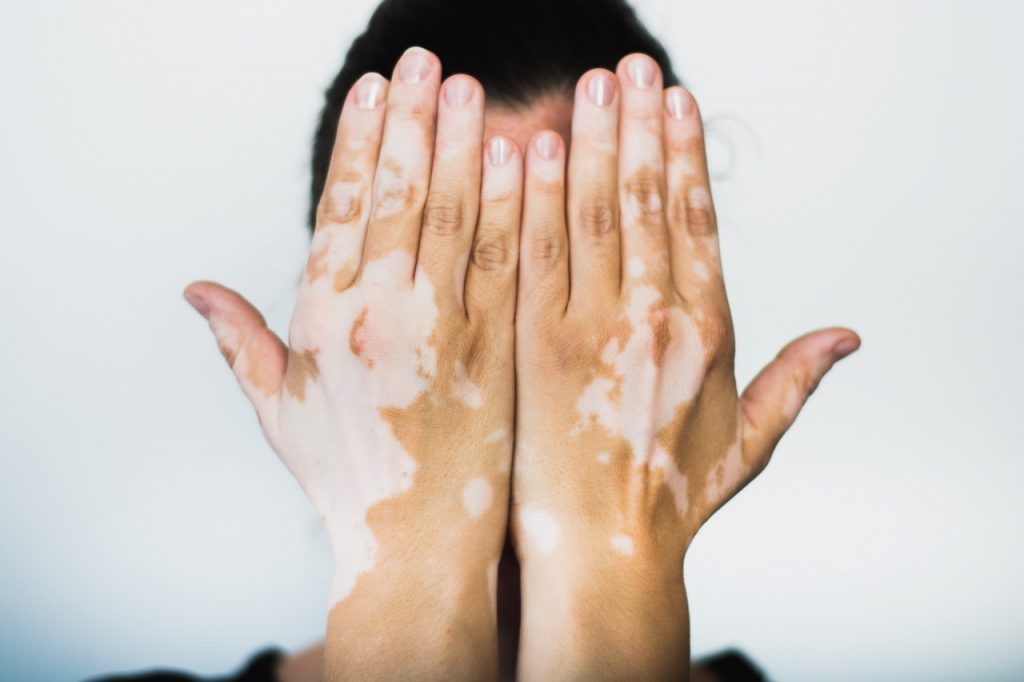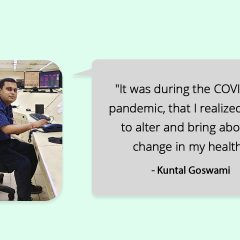 Have you ever come across someone with lighter or white skin patches? Ever wondered what was wrong with them? Ever been curious enough to research? What these individuals suffer from is called Vitiligo. As today is World Vitiligo Day, let us understand this skin disorder.
Have you ever come across someone with lighter or white skin patches? Ever wondered what was wrong with them? Ever been curious enough to research? What these individuals suffer from is called Vitiligo. As today is World Vitiligo Day, let us understand this skin disorder.
Vitiligo occurs when pigment-producing cells (melanocytes) die or stop producing melanin — the pigment that gives your skin, hair and eyes color. The involved patches or affected area of the skin become lighter or white.
Common Symptoms
- Patchy loss of skin color
- Premature whitening or graying of the hair on the scalp, eyelashes, eyebrows or beard
- Loss of color in the tissues that line the inside of the mouth and nose (mucous membranes)
- Loss of or change in color of the inner layer of the eyeball (retina)
Onset: Vitiligo can start at any age, but often appears before the age of 20.
Different Types of Vitiligo
- Generalized Vitiligo: This is the most common type. The patches appear on most parts of the skin. The discolored patches often progress similarly on corresponding body parts (symmetrically).
- Segmental Vitiligo: In this type, only one side or part of the body gets affected. It tends to occur at a younger age and progresses for a year or two, and then it stops.
- Localized (Focal) Vitiligo: In this type, one or only a few areas of your body get affected.
It is difficult to predict how the disease will progress. Sometimes the patches stop forming without treatment. In most cases, pigment loss spreads and eventually involves most of your skin. In this condition, the skin rarely gets its color back.
What Causes Vitiligo?
The most common causes of vitiligo may be related to:
- A disorder in which your immune system attacks and destroys the melanocytes in the skin
- Family history (heredity)
- A trigger event, such as sunburn, stress or exposure to industrial chemicals
Diagnosis
- Medical History and Examination: If your doctor suspects you have vitiligo, he or she will ask about your medical history, examine you and try to rule out other medical problems, such as dermatitis or psoriasis. He or she may use a special lamp to shine ultraviolet light onto the skin to determine whether you have vitiligo.
- Skin Biopsy & Blood Draw: Take a small sample (biopsy) of the affected skin, draw blood for lab tests to look for underlying autoimmune conditions, such as anemia or diabetes
Treatment
Many treatments are available to help restore skin color or even out skin tone. Results vary and are unpredictable. Some treatments have serious side effects. Your doctor may suggest that you first try improving the appearance of your skin by applying self-tanning products or makeup.
If you and your doctor decide to treat your condition with a drug, surgery or therapy, the process may take many months to judge its effectiveness. And you may have to try more than one approach or a combination of approaches before you find the treatment that works best for you.
Even if treatment is successful for a while, the results may not last or new patches may appear.
Medications
No drug can stop the process of Vitiligo — the loss of pigment cells (melanocytes). But some drugs, used alone or with light therapy, can help restore some skin tone.
- Creams That Control Inflammation: Applying a corticosteroid cream to affected skin may help return color, particularly if you start using it early in the disease. You may not see a change in your skin’s color for several months. This type of cream is effective and easy to use. But it can cause side effects, such as skin thinning or the appearance of streaks or lines on your skin. Milder forms of the drug may be prescribed for children and for people who have large areas of discolored skin.
- Medications That Affect The Immune System: Ointments containing tacrolimus or pimecrolimus (calcineurin inhibitors) may be effective for people with small areas of depigmentation, especially on the face and neck. This treatment may have fewer side effects than corticosteroids and can be used with ultraviolet B (UVB) light. However, the Food and Drug Administration has warned about a possible link between these drugs and lymphoma as well as skin cancer.
Surgery
This may be an option if light therapy doesn’t work. Surgery can also be used with those therapies. The goal of the following techniques is to even out your skin tone by restoring color.
- Skin Grafting: In this procedure, your doctor removes very small sections of your normal, pigmented skin and attaches them to the areas that have lost pigment. This procedure is sometimes used if you have small patches of vitiligo. Possible risks include infection, scarring, a cobblestone appearance, spotty color and failure of the area to recolor.
- Blister Grafting: In this procedure, your doctor creates blisters on your pigmented skin, usually with suction. He or she then removes the tops of the blisters and transplants them to an area of discolored skin.
- Tattooing (micropigmentation): In this technique, your doctor uses a special surgical instrument to implant pigment into your skin. It’s most effective in and around the lips in people with darker complexions.
Lifestyle & Home Remedies
The following self-care tactics may help you care for your skin and improve its appearance:
- Protect your skin from the sun and artificial sources of UV light. If you have vitiligo, particularly if you have light skin, use a broad-spectrum, water-resistant sunscreen with an SPF of at least 30. Apply sunscreen generously and reapply every two hours — or more often if you’re swimming or sweating.
- Seek shade and wear clothing that shields your skin from the sun. Don’t use tanning beds and sunlamps.
Protecting your skin from the sun helps prevent sunburn and long-term damage. A bad sunburn can make your condition worse. Sunscreen also minimizes tanning, which makes the contrast between normal and discolored skin less noticeable.
We hope this article helped you understand the symptoms, causes and treatment of Vitiligo. Do you have any doubts? Let us know in the comments below!
Find more articles on skincare and remedies here. You can also reach out to an expert by subscribing to GOQii’s Personalized Health Coaching here.
#BeTheForce




many people don’t like it, but I’m fine with it, I don’t see anything wrong with that
Thanks for sharing such valuable information. Glad to reach out to this post.
Thanks For This Amazing Information